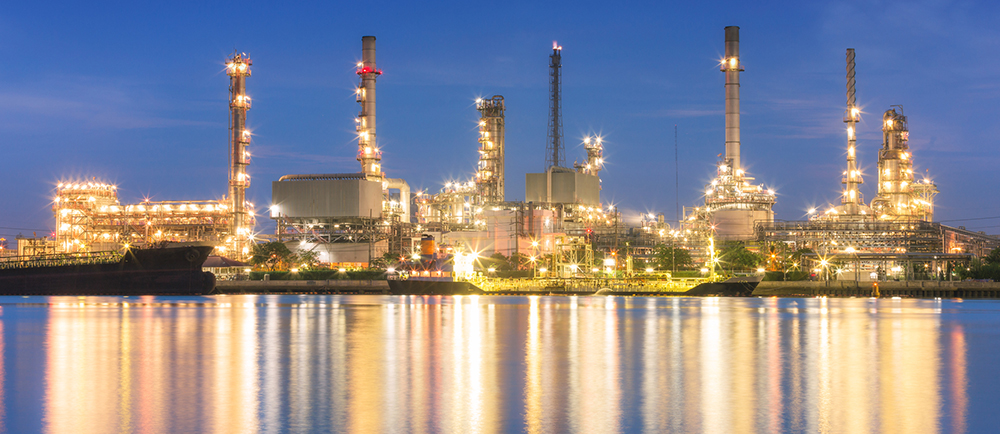Understanding the Global and Domestic Crude Oil Market

Crude Oil Market
Multiple Factors Contribute to Fluctuations
In general, economic markets rise and fall like the tides. Sometimes spiking quickly, sometimes slowly rolling over long periods of time. The crude oil market is no different. Throughout the past five decades, oil availability has ebbed and flowed. This is often the result of natural disasters and with fluctuations in the global political climate.
Politically Motivated Crude Oil Market Fluctuations
A key example of a politically motivated market fluctuation came about when the Organization of Petroleum Exporting Countries (OPEC) declared an oil embargo with the United States as a result of our involvement in the 1973 Yom Kippur, Arab-Israeli War. Our decision to extend resupply to the Israeli military inflamed relations between the primarily Arab countries of OPEC. This resulted in what is now referred to as the “first oil shock.” During this time, oil prices skyrocketed from $3 a barrel to around $12 globally with the US absorbing the highest increases in price. The effects of the 1973 oil embargo on global politics and the global economy were severe and longstanding.
The Interconnectedness of the Global Economy
In 1979, the “second oil shock” rocked the world as a result of decreased supply following the Iranian Revolution. Technically, the global oil supply was affected by only 4%, but in the aftermath of the 1973 embargo, prices on a barrel of oil were driven to extreme heights as widespread panic ensued with an anticipation of shortages. The price of oil peaked at roughly $39 during this time, resulting once again in extremely long lines at service stations across the United States. Politically driven market fluctuations illustrate how interconnected the global economy actually is, and how dependent we as Americans can be on its ebb and flow.
The Impact of Natural Disasters
In the aftermath of devastating natural disasters like Hurricane Katrina in 2005, the 2010 earthquake in Haiti, or the 2011 earthquake and tsunami that rocked Japan, the oil industry and energy sector is often negatively impacted. With such natural disasters as hurricanes, tsunamis, earthquakes, fires, tornadoes, landslides and flooding, roads are often impassable, electricity goes out, basic water and food resources become scarce, sanitation infrastructure breaks down, the health and wellbeing of citizens is compromised and emergency response systems struggle to deliver basic care and protection. In areas hit hard by natural disasters, the extraction, manufacturing, refinement and shipping of petroleum products becomes more difficult, and a supply and demand domino effect ripples outward to ultimately affect consumers around the world. Prices increase as supply becomes scarce and businesses are often forced to raise prices temporarily to accommodate lowered inventory and product availability.
The Current State of the Global Crude Oil Market
The news pertaining to the state of global and US oil markets changes nearly every day. Follow the Wall Street Journal’s Oil Markets News page and you will see prices and trends fluctuate depending on US inventory, investment, US output, EPA status, OPEC’s current status, the power of the US dollar along with other currencies and a myriad of other factors. According to the International Energy Agency’s (IEA) five-year market analysis and forecast, “Oil production growth from the United States, Brazil, Canada and Norway can keep the world well supplied, more than meeting global oil demand growth through 2020, but more investment will be needed to boost output after that. Over the next three years, gains from the United States alone will cover 80% of the world’s demand growth, with Canada, Brazil and Norway able to cover the rest.” China remains the “main engine of demand growth” but increasingly stringent emissions control policies within the US and across Europe will likely slow market growth as will electric vehicle technology becoming more predominant. According to the IEA, global oil demand will increase by 6.9 million barrels a day (mb/d) to 104.7 by 2023.
The Impact of Alternative Energy and Resources on the Global Oil Market
Other factors come into play when considering fluctuations in the global crude oil market. Such considerations include the increase of alternative energy sources such as natural gas, electric vehicle technology, solar and wind power. The increased usage of these alternative energy sources creates a substitution and subsequent tradeoff of global demand, lowering the dependency on crude oil production. In tandem with this tradeoff, OPEC has the ability to cut the supply of crude, which artificially creates an environment of scarcity, thus driving up prices on the global market.
Contact an SCL Consultant Today
In a wide range of industrial sectors, we’re here to protect and optimize the machines that keep our country moving, and we pride ourselves on providing superior logistics and solutions, extensive product and industry knowledge and total performance satisfaction for our customers. No matter where the future of the automotive industry is headed, we will be there to deliver what you need to keep you in motion. For information on how we can assist you in choosing the optimal products for your vehicle or equipment at a competitive price, contact an SCL consultant today.
